





AA1
American Academy,
Rome Italy
AA1
American Academy,
Rome Italy
Higher Learning
Photography By HENRY HARGREAVES, words by LAUREN LEVINGER
Sitting high on top of Janiculum Hill overlooking Rome is the American Academy. A privately funded research and arts institution home to artists and scholars from the US who have been awarded the Rome Prize.
The Academy has been functioning for over a century but in 2007 Alice Waters began The Rome Sustainable Food Project. Intended to provide the community of the American Academy in Rome with a collaborative dining program that nourishes scholarship and conviviality and sets out to create a model of sustainable dining in an institution.
If you are fortunate enough to be a reciprocant of the Rome Prize, you share your meals at the enormous communal table and eat some of the finest fare in Italy. After the meal when all scholars have gone back to work the staff come together and share what is left.
Head chef Christopher Behr shares stories of life at the American Academy.
INTERNS
These guys are here for 4 months.This particular crew is on the tale end of their experience here. So as their graduation project, so to speak, they get to design the menu. They can do a lunch or a dinner. Most choose to do dinner so they can get a bit more fancy. We take the back seat. They plan it, we buy the food, and they organize it from there. Each gets a turn to be the chef for the day. So they use the things they have learned and the cool stuff they have seen and the inspiration they have to make the meal. Usually we sit down after the staff meal and dictate to them what they will be doing. So now the tables are turned and they get to tell us what to do. We are here to help them execute that.
This is my third year here. I started as an intern. I was helping teach a cooking class in Brooklyn and the original chef from the project, Mona saw me cook the meal and she offered me the job after the class. I had been the chef at a Roman restaurant in San Francisco for many years so this is right where I wanted to be. The twist was, the chef at the time broke his ankle in a moped accident, so I ended up getting out here three weeks from the date she offered it to me. I quit my job, split with the girlfriend, and ended up here and it’s exactly what I want to be doing and where I want to be doing it.
GLOBAL PROGRAM
These guys come from all over the world. We get a lot of americans during the Summer especially, but we have had Irish, Australian, English, South African...we also always keep a spot open for a local Italian. Just to reinforce the culture and have the language in the kitchen…


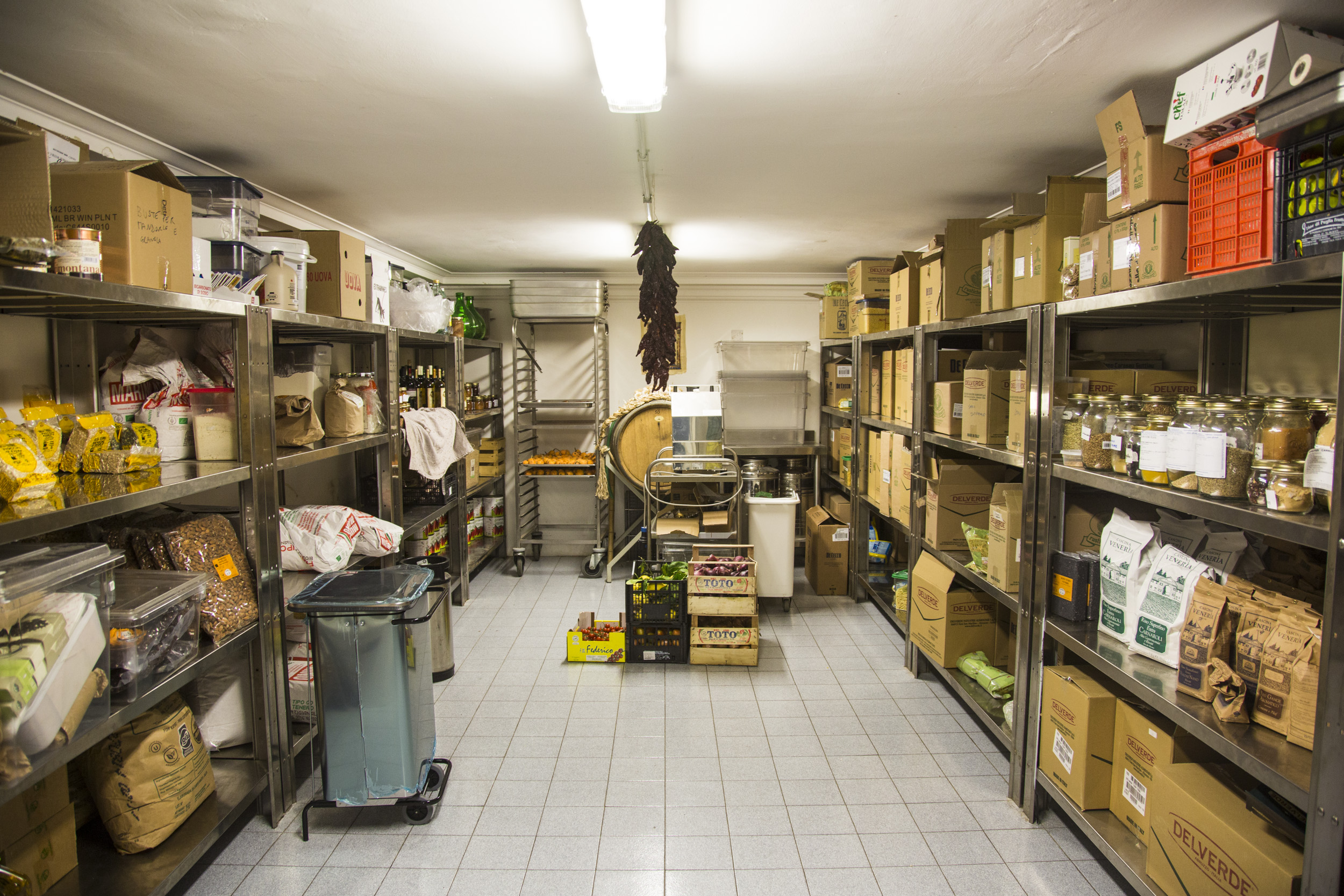
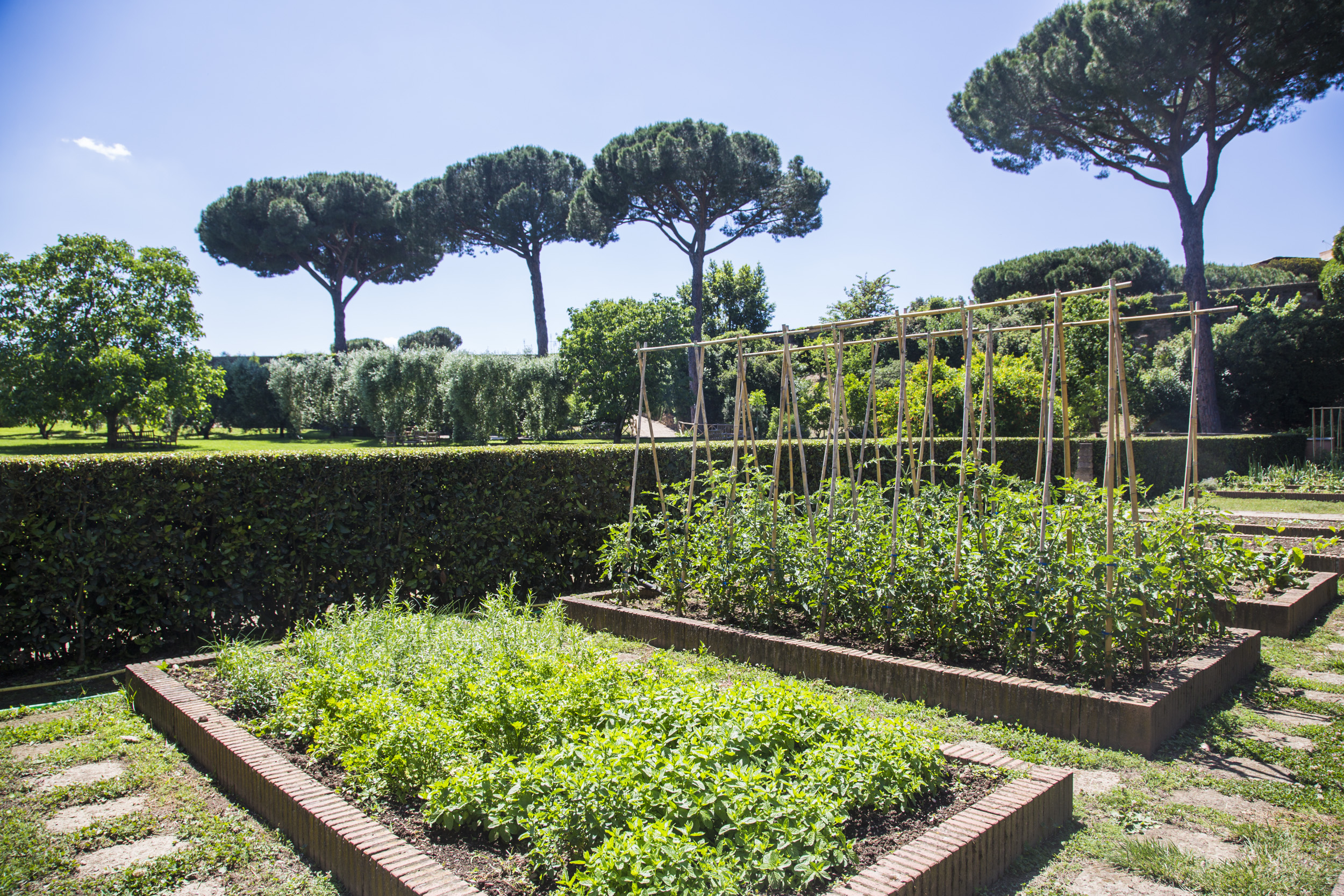

AA2
AA2
THE FIRST FARMER
That portrait? That’s Giovanni Burnabe. He is a farmer. His farm is about an hour, an hour and a half away. He was pivotal to the beginning of this project. He is part and parcel of what we try to do here. We have a large network of small producers. We use him about once a month at this point. He is a one man army. He grows 4 or 5 things. Some of them are spontaneous. He is delivering to us next week in fact. Everytime he is here, he will walk up to the portrait and point to himself, turn to the interns and say “that’s me!”. He is like the All Roker of Italian TV. He does like the garden report.
He was Alice and Mona’s first farmer. He is the standard by which we try to abide by. we have a much bigger network of people now who can deliver everyday. Back in those days we produced aroud 7,000 meals a year. This year we did around 40,000. So the scope has changed.
Next week we are going to be cooking a meal for 500 people, which is the biggest meal we have ever done using all of our own ingredients.
THE PROGRAM
This project has been going for eight years. However, the academy itself has been around since the turn of the century. The idea is to bring all these disciplines together; artists, architects, poets, scholars. Eight years ago they had terrible food, they had institutional dining, lettuce out of bags, that kind of thing. It was anti to the mission because they wanted to have all these people come together to share ideas.
So Adele, the president at the time brought in Alice Waters, who changed the food program. But she wanted to do even more than that, she really wanted to make an impact. So she developed the Rome Sustainable Food Project. And that is what I mean by “this project”. So she designed this system where we take in interns, we have an edible garden, we have a compost system, my cooks teach the interns about sustainable cooking, organic gardening, things of that nature...It started out as an internal thing, but our mission is to be able to package this idea up and show other like minded institutions about this type of food program.
Recently I have been consulting with Saint Stephen’s School in Rome which is an international boarding school. In the last few weeks they planted their own edible garden and they are trying to change their own food program because they realize the connection of teaching our youth how important it is to eat this way and how it affects everything else the world. So I am fulfilling the mission of the project, not only keep the community here healthy and supporting the exchange of ideas, but be able to export it and say it works for us this way, how can it work for you. Alice designed the program to not only help the academy achieve their mission of cross- pollination but to also package it up and use the lessons to help others.
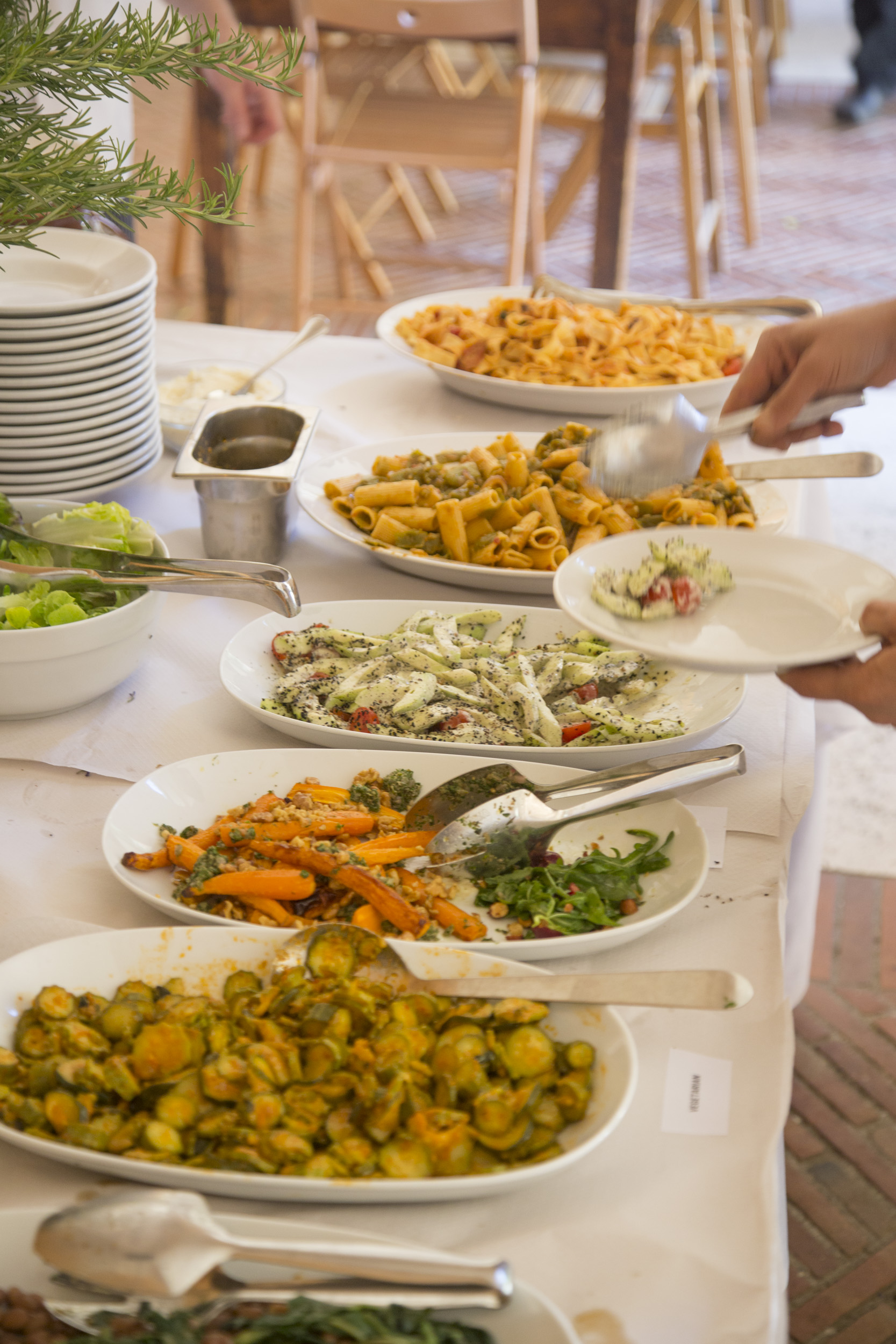
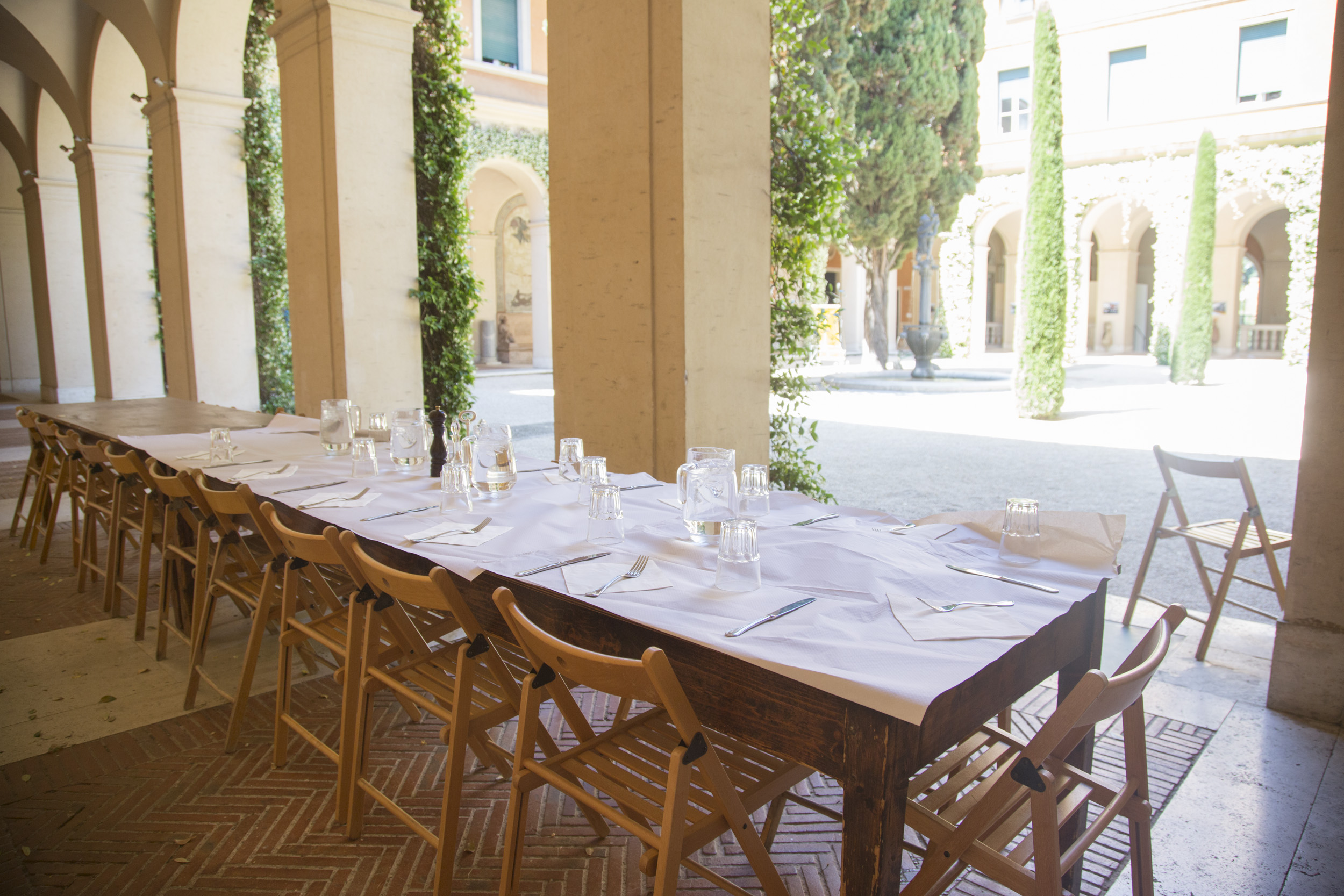
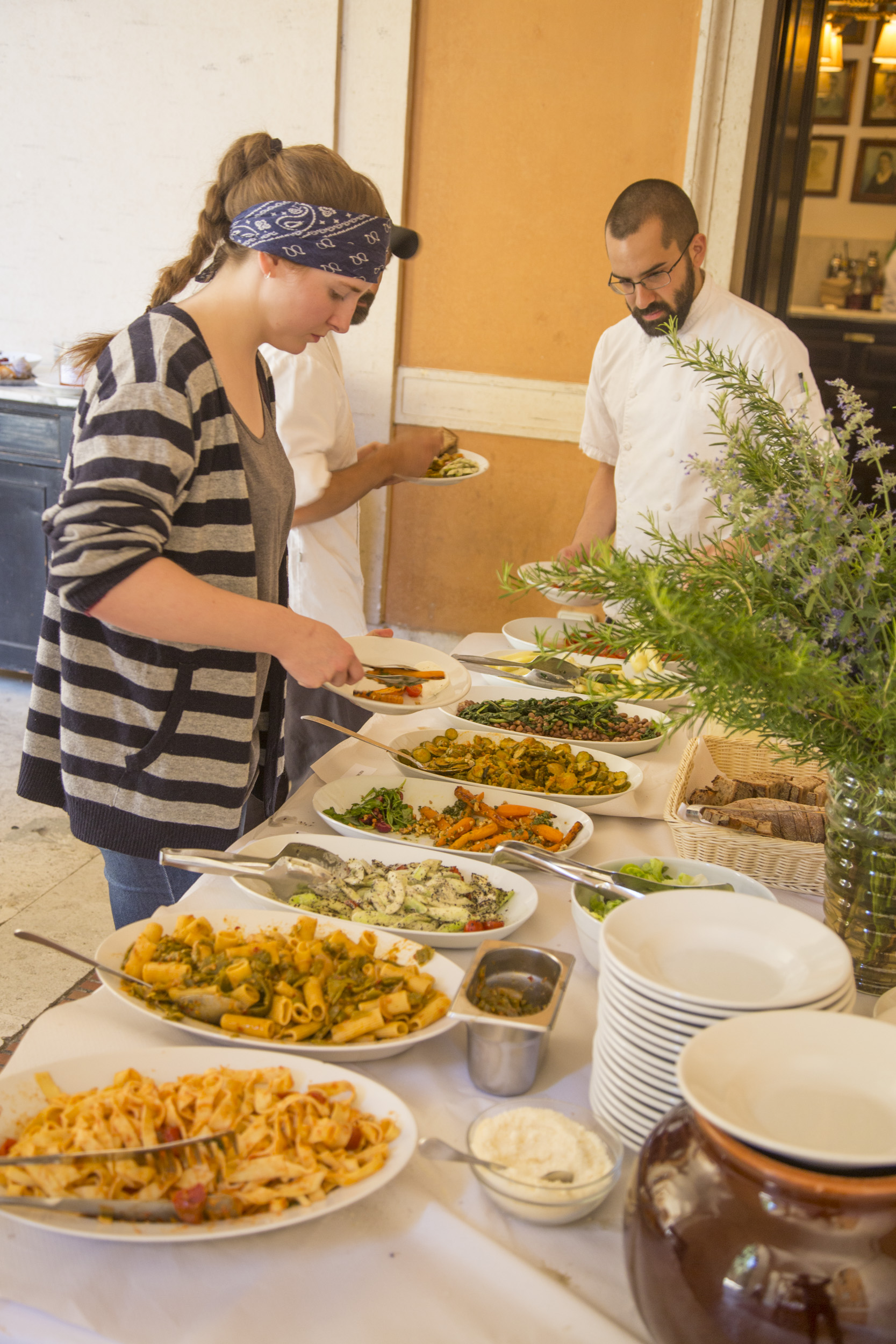
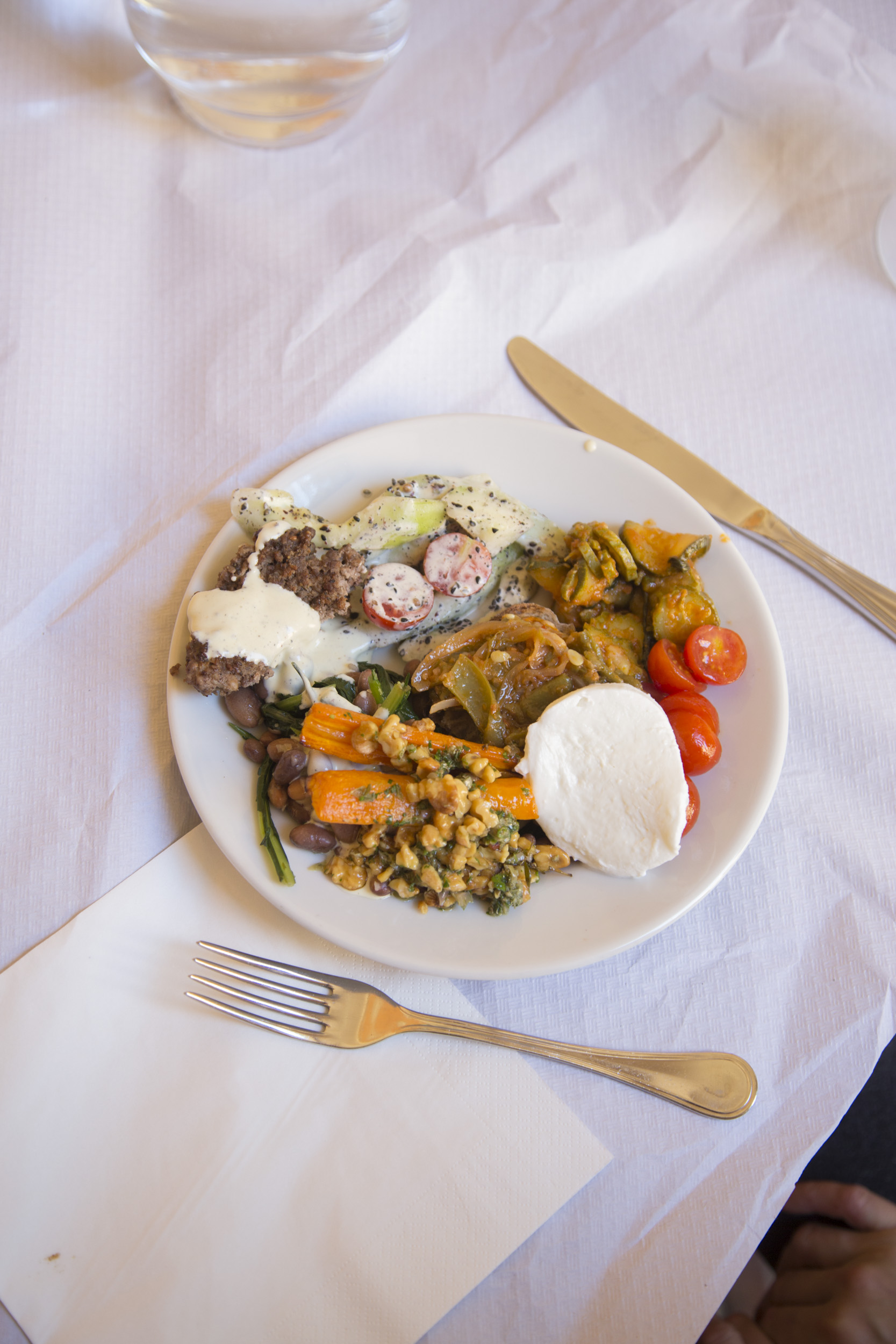

AA3
AA3
ALICE WATERS
She is here two to three times a year. We speak about twice a month. We have a strong connection to the Chez Panisse family. People are constantly rotating in and out of their kitchen and ours. There is a pretty good exchange program.
MEALS
We do two lunches everyday. A buffet at 12PM for the workers. This place is basically run like a hotel. There is a maintenance staff, a gardening staff, a housekeeping staff. We feed all of them. and then 45 minutes later we feed the other 50-60 fellows and artists, and then dinner is at 8PM. Fridays are family night, so they are more casual. The rest of the week we go between classic Roman/Italian and California lighter fare, with less meat, and more salad and vegetables. The ultimate goal is that everyone leaves full and satisfied.
The fellows arrive in September. They won the Rome Prize and part of the prize is they get to eat this kind of food twice a day, five or six times a week. The first few months everyone eats a ton, and they gain ten pounds because they are eating pasta twice a day. So you see portions reduced a little bit over time.

AA4
AA4
STAFF MEAL
We meet after all of the fellows and artists
The menus are built upon leftovers. For example, we will cook off a bunch of beans the night before for a dish, and whatever is left we will throw in a soup or a pasta the next day .That is reflected in our staff meal. All of the odds and ends left over from the two lunches are presented for us. The joke is once a month we eat a hot pasta, but usually it’s the stuff that has been sitting there for a few hours. Again, it’s another way to keep the sustainability alive, that we eat all the leftovers.
We try to throw out as little as possible. Anything vegetable based that isn’t seasoned just goes back into the compost which is used in the garden. We throw out waste very very rarely. We designed the way we work to save these things. We don’t mix the ingredients until the very last minute because there may be an extra handful of green beans that we can save for something else. Everything has a plan. This lettuce is a little brown, so tomorrow we are going to wilt it down with garlic and pepper. Everything has a second life, sometimes even a third.
So everyone gets here around 7am. By the time staff meal happens, everyone has been here all day. This is a cross of both shifts right now. We get from 2:30-3:15pm to sit down around a table which at most places does not exist.
We sit down and we have the remnants of this beautiful meal and we get to decompress for 45 minutes. Sometimes there is a sort of debrief about the food, like we will talk about how a salad can use a bit more vinegar next time, or wouldn’t it be great with lemon...and then the extension of it is we come in and talk about the things that we can save. Like we have a bunch of potatoes leftover, so those can go in the fritatta tomorrow. We put our heads together again.
We make sandwiches for the bar every morning, one meat and one vegetable, and almost all the vegetable versions are based on something we had leftover from the lunch the previous day.
Then the dinner team sits down and talks about the menu, what is being served, and delegates out who is cooking what. We all get to relax for a few minutes, have a coffee, which is very Italian. What’s also really nice is that people who are visiting or have the day off are always welcome at our staff meal.
It’s the time of the day that you can really shoot the shit. Especially most of us not being from Italy and we all get to talk about what is happening in the world; checking our phones for the news and talking to each other about everything that is going on. Catching up about american TV shows, just stuff you aren’t able to talk about in the kitchen.
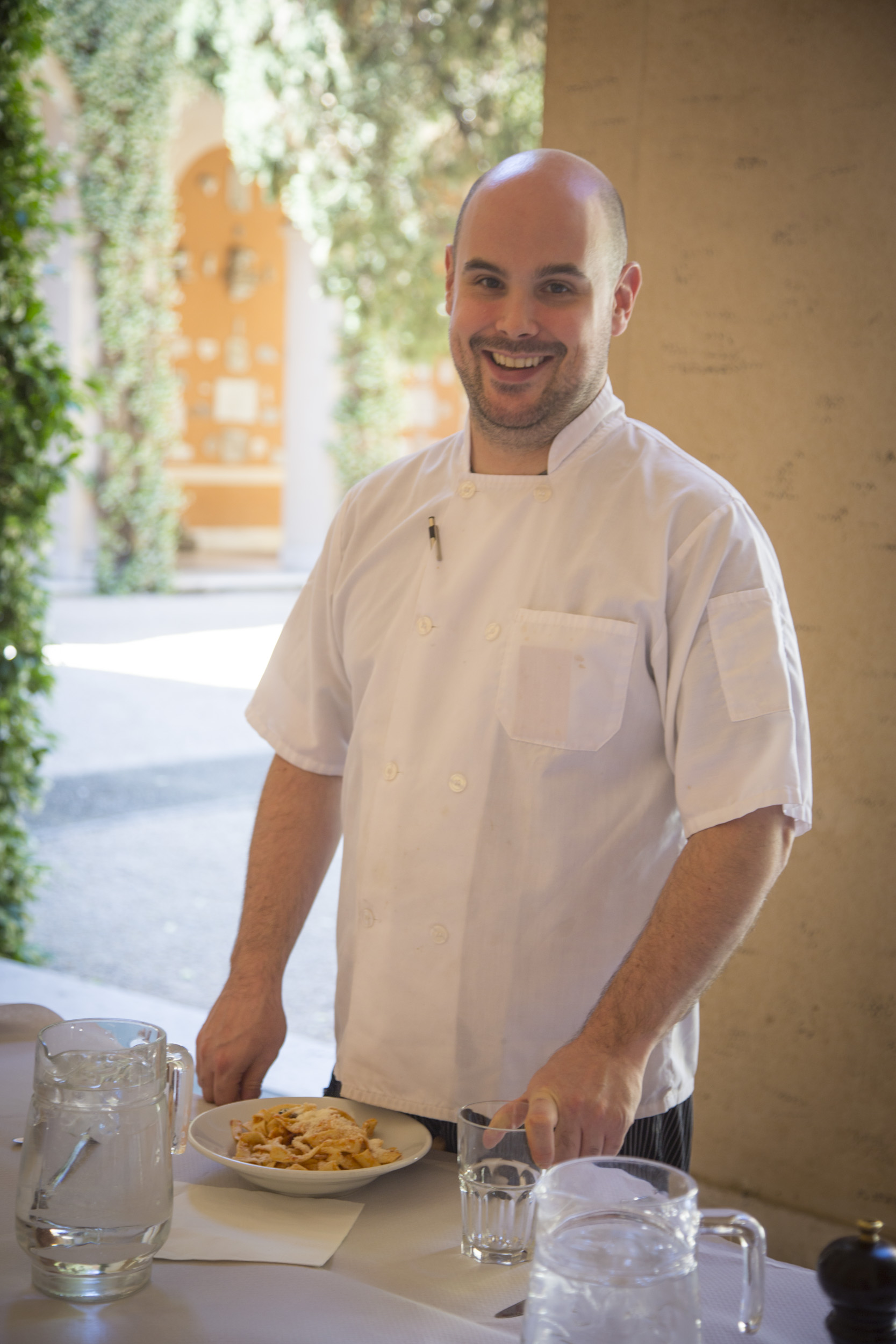

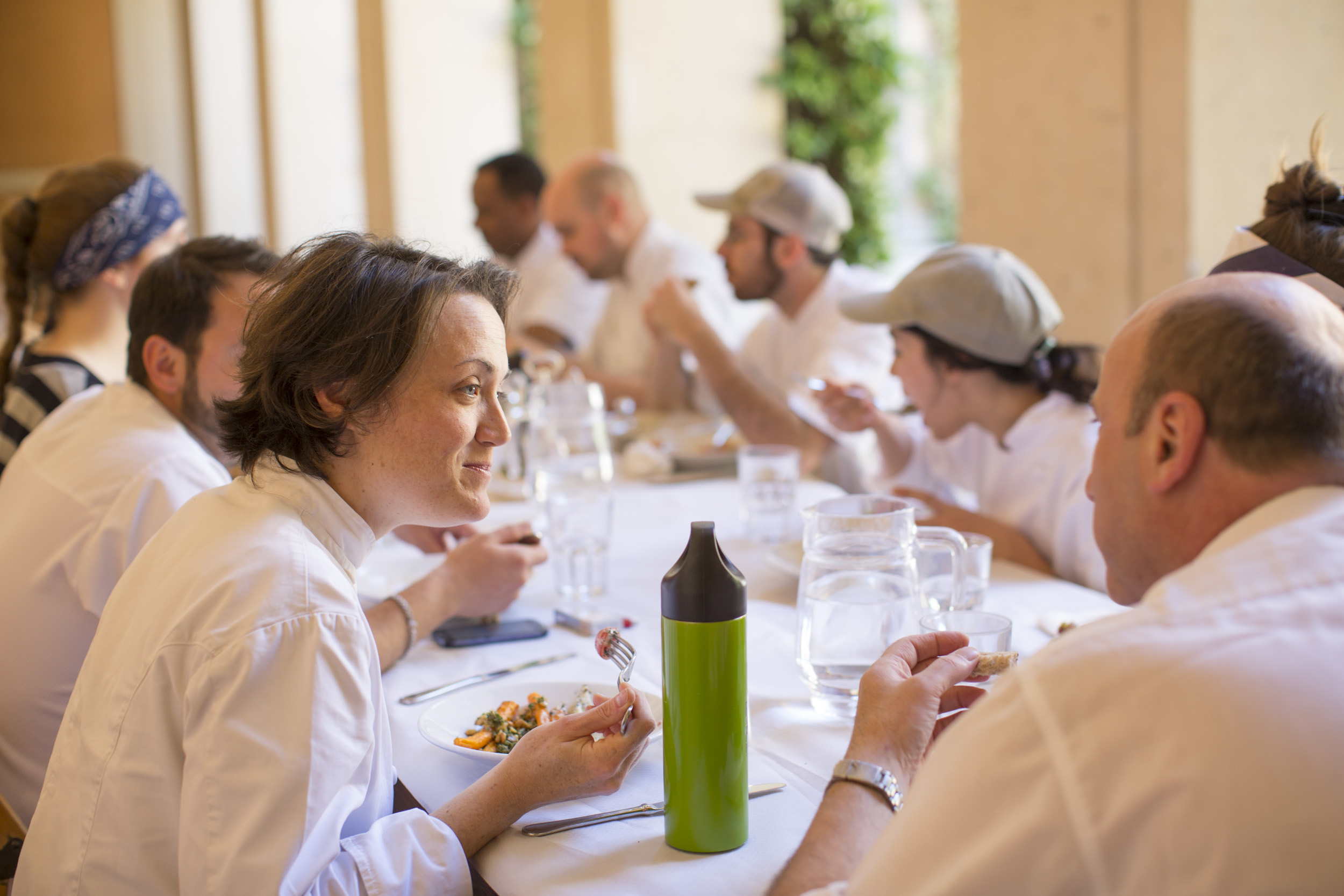
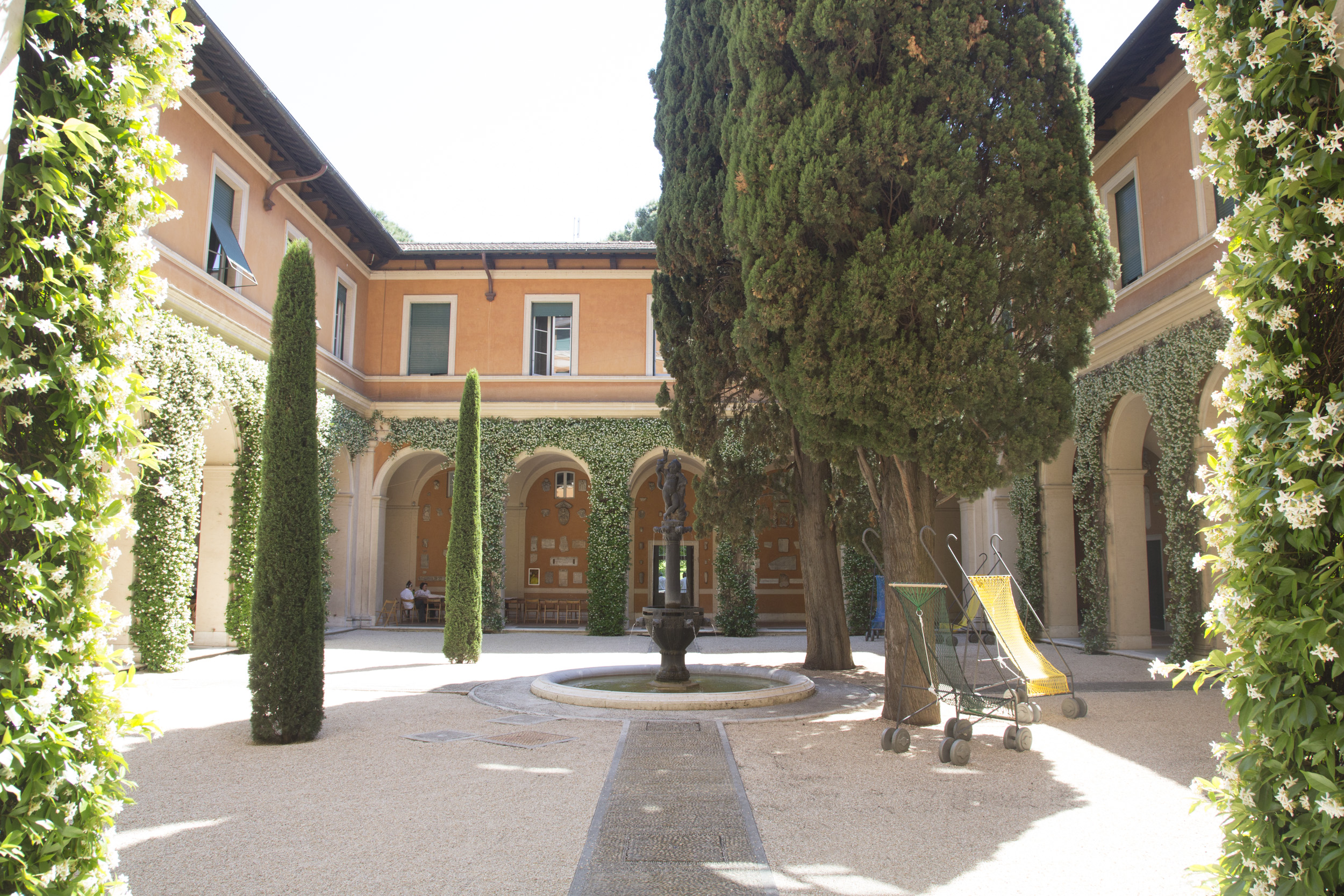

AA5
AA5
DIGESTION
Italians and Romans in particular have an obsession with digestion. If you hear workers talking at a bar, often they are talking about their digestion. I had a zucchini dish at this old roman trattoria. It was basically zucchini cut into long strips with the seeds taken out stewed down in tomato sauce, until they were really soft, almost overcooked, but the flavor was delicious. I reproduced that dish today to a point.
This menu speaks to what I was saying. There were all these classics like Hamburger alla Piastra. the workers know it as hamburger, Zucchini san tanima… these are classic roman, but there is mediterranean and Cal-Italian influences we get from Chez Panisse thrown in there. I went to Istanbul last year and bought all these spices back, so we throw those in there. It’s great for the fellows who eat only seasonally.
SEASONAL EATING
We are strictly seasonal. In the winter it can be radicchio everyday. In spring, asparagus everyday. In summer, eggplants, tomatoes, and peppers everyday. So using these outside influences keeps it interesting. For the menu we do taco night, indian night, japanese night. The fellows eat here alot and bring their families, so we try to keep it exciting.
MENU
Rigatoni with long cooked romano beans and andouille
Mushroom soup with lentils
Fresh borlotti beans mixed with dandelion greens
Arugula with cherries and almonds
Spiced Cucmbers with a lemon tahini
roasted carrots with salsa verde
Find out more here!




